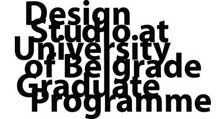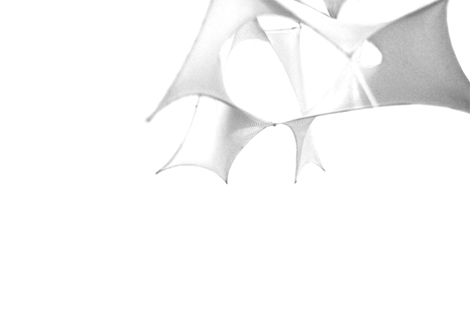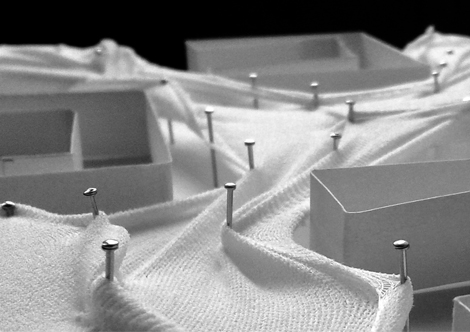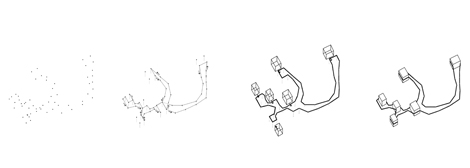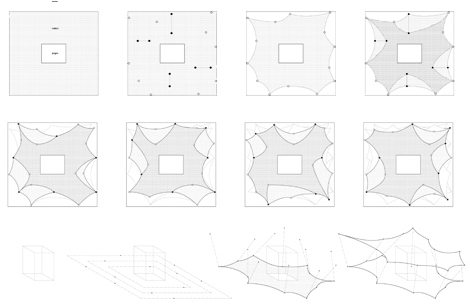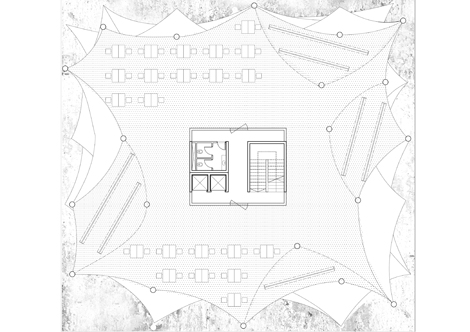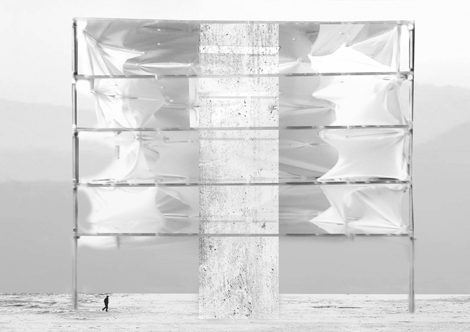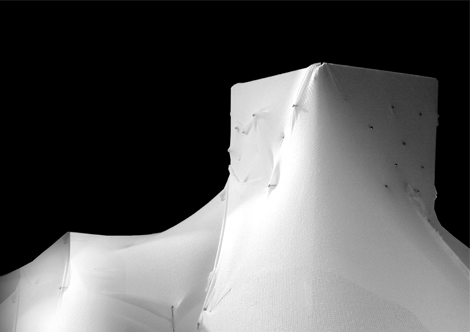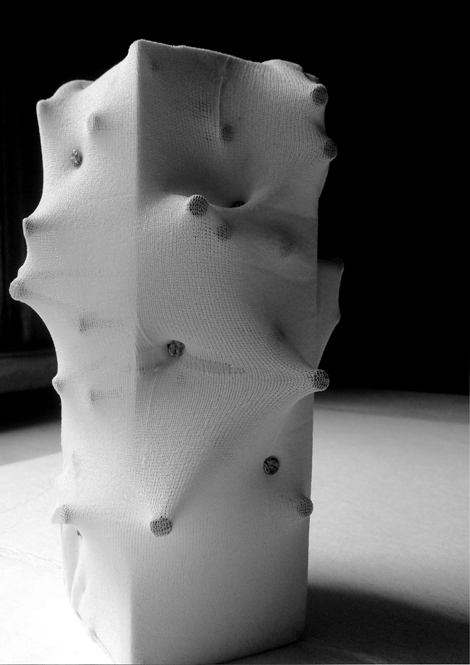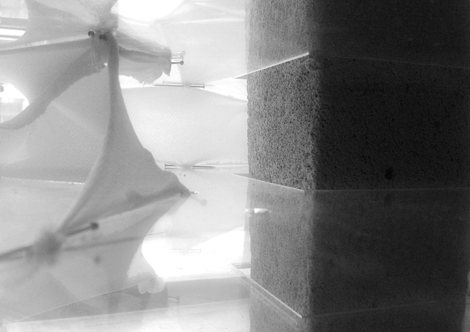Envelopment– Understanding of materialization of an object in architecture today has a key role, so the context of the external environment network has to be valorized and understood. The materials give an essential quality of structural individuation, making it quite different from the expected.
The natural skin is a layer zero of an innate boundary structure, the clothing is a layer of soft architecture wrapped around the contours of a body, and the room is a sloughed-off carpace cast into rigorous laws of geometry, paced in a defined place and enlarged in scale to give us a comfortable distance.
The things and places seen at first sight as completely clear and physicaly simple usually are not simpel at all, bit they represent multi-layered thematic cornice, whose internal boundaries are crossing and touching each other. This multi-layered limiting structure is something like shadows constantly changing inside a system, trying to get a final form. The envelopment od artificial layers and their number is constantly changing with change of environment and needs.
Before making any ambience and conditions in an artifical environment it is necessary to understand the needs of that environment and to define a number of elements for its functioning. The external environment exists only as another kind of internal structure, with another climate and temperature. The envelopment can be understood as an enclosure, but it realy creates a free ambivalent impression of an internal structure put between polazied cathegories of publlic and intimate. Maybe the external structures should be treated as the element which defines the caracter of internal structures.
We can see and feel the space context according to the limits defined by our senses, so we usually don’t react to real distances, which make us feel near something and far away from it at the same time. The walls and surfaces are use to define the „material energy“, stopping its full-force effects or putting some limits to it. Energies activating our senses are material feelings that we produce trying to stimulate materials with physical changes. Reacting to the smell of wet or hot concrete we touch an reality in architecture which has to be measured by man’s needs. Is that an illusion if we treat the external structure as an opposite of the internal one?
Obmotavanje- Shvatanje materijalizacije objekata danas igra ključnu ulogu, te se kontekst spoljašnjeg okruženja mora poštovati i razumeti. Materijali daju strukturi suštinski kvalitet koje ta struktura individualizuje, čineći je različitom od očekivanog.
Prirodna koža predstavlja nulti sloj urođene granične strukture, odeća, sloj meke arhitekture obmotane oko obrisa tela, a soba ispražnjenu ljušturu, podložnu rigoroznim geometrijskim zakonima, smeštenu na određeno mesto i proširena do te mere da omogućava dovoljnu distancu.
Stvari i mesta koja se na prvi pogled čine potpuno jasnim i fizički prostim, zapravo, to najčešće nisu, već prestavljaju višeslojni tematski okvir unutar koga se granice preklapaju i dodiruju. Ta višeslojnost graničnih struktura je poput obrisa senki koje se stalno menjaju unutar sistema, pokušavajući da dobiju stalan oblik. Obmotavanje veštačkih slojeva i njihov broj se stalno menja sa promenom potreba i okolnosti.
Stvaranju ambijenta i uslova u veštačkoj sredini prethodi razumevanje potreba te sredine i definisanje određenog broja elemenata za njeno funkcionisanje. Spoljašnjost postoji samo kao druga vrsta unutrašnjosti, sa drugačijom klimom i temperaturom. Obmotavanje se može tumačiti kao zatvaranje, dok zapravo nastaje slobodan ambivalentni privid unutrašnjosti koji se nalazi između polarizovanih kategorija javnog i intimnog. Možda treba tretirati spoljašnjost kao ono što definiše karakter unutrašnjosti.
Kontekst prostora doživljavamo i vidimo onoliko koliko je našim čulima to dozvoljeno, često ne reagujući na stvarne distance koje nas zbližavaju, a u istoj meri i udaljavaju. Zidovi i površine služe za određivanje ponašanja “energije materijala” sprečavajući ih da deluju punom snagom ili postavljajući pragove njihovog dejstva. Energije koje aktiviraju nasa čula su materijalni osećaji koje nastojimo da proizvedemo stimulisuci materijale putem fizickih promena. Reagujuci na dodir toplog ili miris mokrog betona dolazimo do arhitektonske realnosti koja mora biti po meri coveka. Da li je varka ako tretiramo spoljašnjost kao suprotnost unutrašnjosti?
